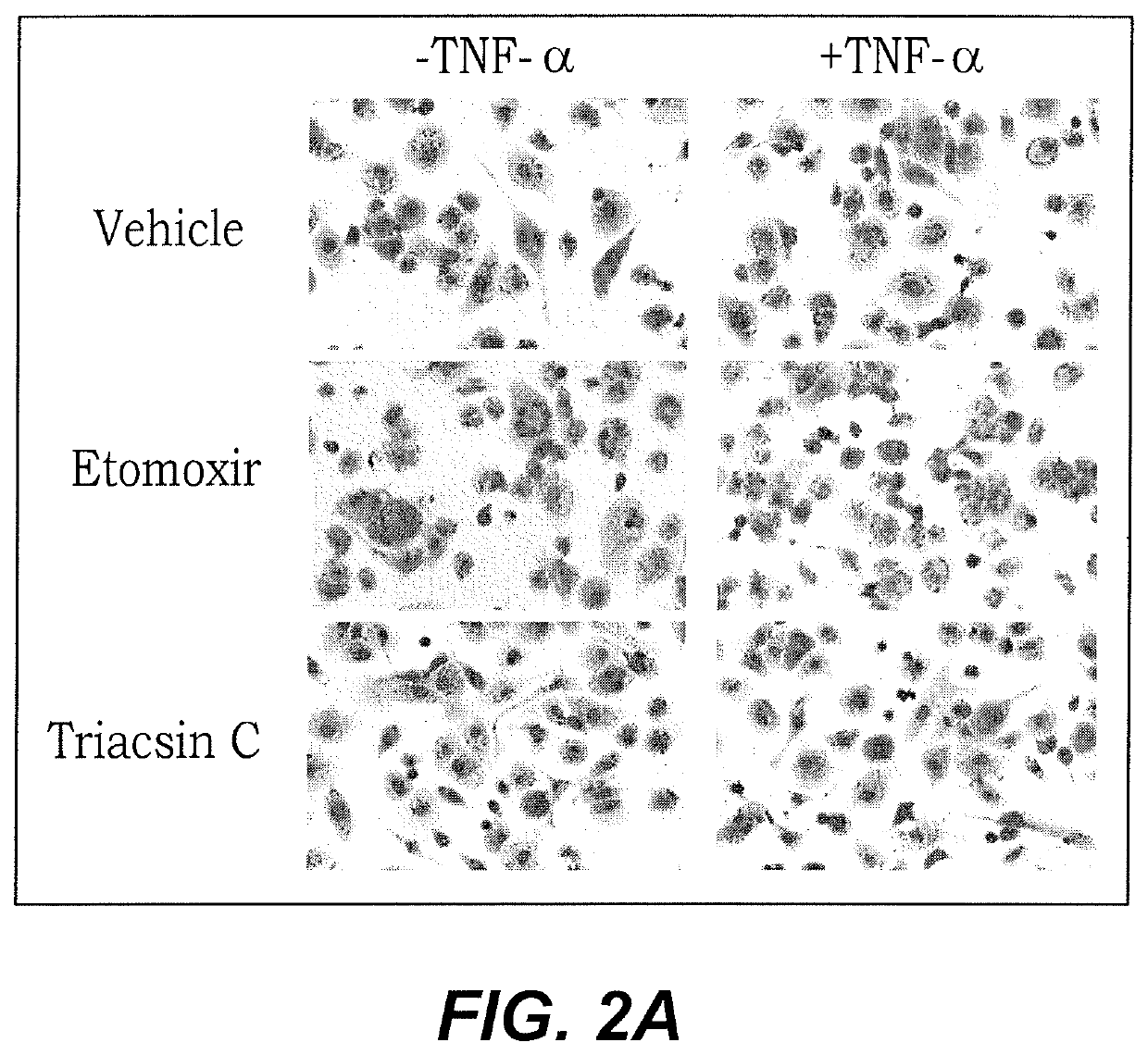Method of treating postprandial inflammation
a postprandial inflammation and postprandial inflammation technology, applied in the field of postprandial inflammation treatment methods, can solve the problems of prolonged inability to use most, and inability to achieve sustained or extreme monocyte/macrophage pro-inflammatory response, so as to prevent or minimize the acute effect of said sfa
- Summary
- Abstract
- Description
- Claims
- Application Information
AI Technical Summary
Benefits of technology
Problems solved by technology
Method used
Image
Examples
example 1
Materials and Methodologies
[0023]Cell culture: Human monocytic leukemia cell line (THP-1) cells were purchased from American Type Culture Collection (ATCC). Cell cultures were maintained in RPMI-1640 culture medium (Gibco, Life Technologies, Grand Island, USA) supplemented with 10% fetal bovine serum (Gibco, Life Technologies, Grand Island, N.Y., USA), 2 mM glutamine (Gibco, Invitrogen, Grand Island, N.Y., USA), 1 mM sodium pyruvate, 10 mM HEPES, 100 ug / ml Normocin 50 U / ml penicillin and 50 μg / ml streptomycin (P / S; Gibco, Invitrogen, Grand Island, N.Y., USA) and incubated at 37° C. (with humidity) in 5% CO2.
[0024]Cell stimulation: Prior to stimulation, THP-1 cells were plated in 24-well plates (Costar, Corning Incorporated, Corning, N.Y., USA) at 5×105 cells / well cell density unless indicated otherwise. Cells were incubated with either Triacsin C, a Long chain acyl-CoA synthetase (ACSL-1) inhibitor or Etomoxir, a carnitine palmitoyltransferase-1 (CPT-1) inhibitor (CPT-1 is a mitocho...
example 2
Results
[0029]Results of the Oil red O staining show Triacsin C prevents lipid accumulation in response to TNF-α, particularly relative to positive controls of vehicle and Etomoxir treatments, alone (FIG. 2A). These results confirm the findings indicated in the FACS analysis shown in FIG. 2B. Treated cultured cells were visualized under a microscope. Red color in FIG. 2A represents fat / lipid accumulation within the macrophages.
[0030]FIG. 2B shows dot plots of the results from the previously described FACS analysis. Both the size of the cells and their granulation are used to assess lipid accumulation. Green dots represent the general population size and blue dots represent those that accumulated fat. Both vehicle treated and Etomoxir treated cells showed increased lipid accumulation in response to the presence of TNF-α (percentages in top right of plots). In contrast, the exemplary ASCL-1 inhibitor (Triacsin C) treated cells exhibited no significant change in apparent lipid accumulat...
PUM
| Property | Measurement | Unit |
|---|---|---|
| insulin resistance | aaaaa | aaaaa |
| edible composition | aaaaa | aaaaa |
| soluble | aaaaa | aaaaa |
Abstract
Description
Claims
Application Information
 Login to View More
Login to View More - R&D
- Intellectual Property
- Life Sciences
- Materials
- Tech Scout
- Unparalleled Data Quality
- Higher Quality Content
- 60% Fewer Hallucinations
Browse by: Latest US Patents, China's latest patents, Technical Efficacy Thesaurus, Application Domain, Technology Topic, Popular Technical Reports.
© 2025 PatSnap. All rights reserved.Legal|Privacy policy|Modern Slavery Act Transparency Statement|Sitemap|About US| Contact US: help@patsnap.com



